Product Design | Hyundai x Stanford
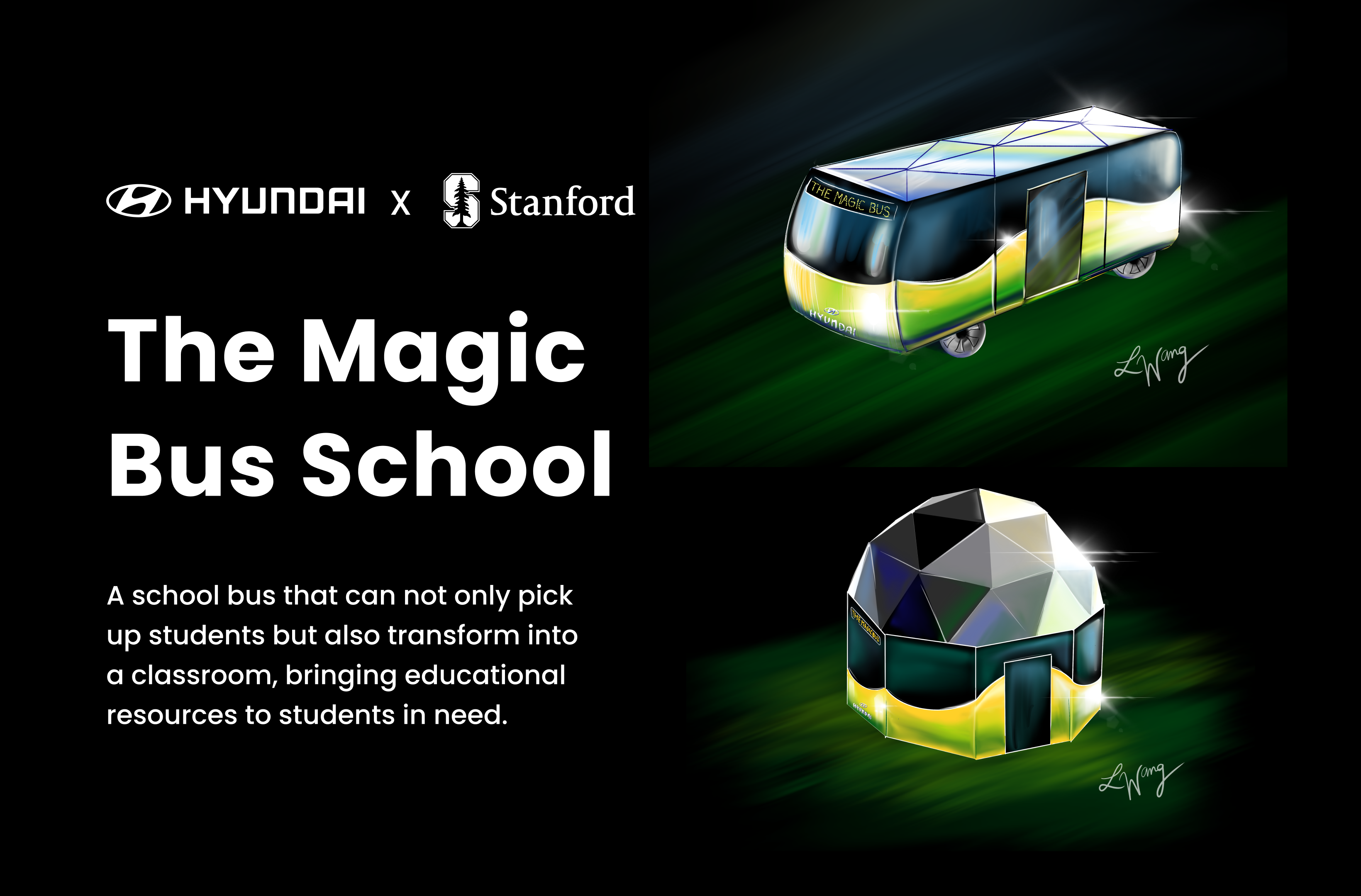
How can cars be redesigned to create a positive impact for the future?
Cars have revolutionized our daily lives and how we operate as a society. They not only transport people from one place to another, but also serve critical roles in our society. How can cars be reimagined to serve a more meaningful role in our society and solve problems of the future?
MY ROLE
Product Design
In this workshop, I took on a leadership role to guide my team’s progress in 5 weeks. I was also the primary product designer who worked on the aesthetics and functionality of our final solution by producing digital art renderings.
Feb. – March 2022
Stanford, CA
TEAM
Hojung Choi | PhD in Mechanical Engineering
Cyan D’Anjou | B.S. in Product Design
Swetha Vaidyanathan | M.S. in Materials Science and Engineering
AT A GLANCE
This design thinking workshop is hosted by Hyundai and the Stanford Center at the Incheon Global Campus (SCIGC). Stanford students and Hyundai employees collaborate together to envision the future of cars and mobility. My team focused on the prompt: cars and creative spaces.
Our work is also documented on https://www.dhyundai.com/.
DATA WALL
Our first exercise of the workshop was a “data wall” challenge, where we aimed to explore the prompt “cars as creative spaces” as broadly as possible. We discussed the meaning of a creative space in general and the virtues of cars as moving spaces.
We explored a wide array of topics, such as a space for social events, a collaborative space, a business space, and an inclusive and accessible space. We were most intrigued by the idea of incorporating core values like agency, convenience, spontaneity, accessibility, and inclusion into designing a car as a creative space.
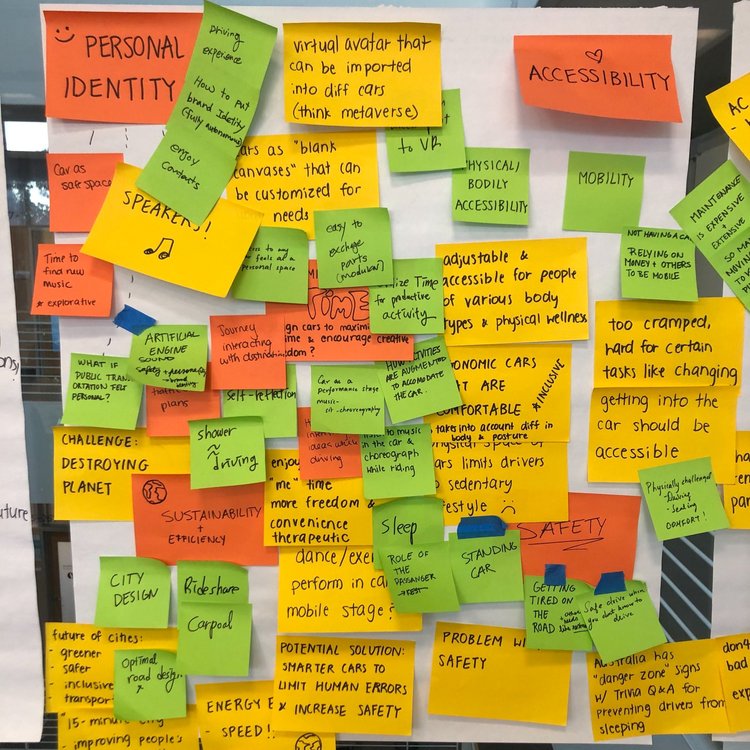
Some of the highlights from the Data Wall exercise were:
- Car as a music performance stage
- Adjustable and accessible space for people of various body types and physical wellness
- Space that encourages creative freedom
- Feeling independent and free
USER PERSONA
Next, we created a persona to help us think about our problem from the perspective of the end user.
Meet Stella! Stella is a 7 year-old girl from a multicultural immigrant family. She has a curious and imaginative mind, and loves stars and space. When she grows up, she wants to become an astronaut or build the next International Space Station.

I don’t know about you, but Stella seems like a cutie! Definitely the kind of child who would ask, “Are we there yet?!?!” on a family road trip.
HOW MIGHT WE
Now that we had our persona, we came up with “How Might We” questions. Some of the notable ones were:
- How might we help Stella see the world and herself as having endless possibilities?
- How might we reimagine cars as a social space so that people can more easily collaborate and develop meaningful connections while on the go?
- How might we fuel Stella’s creative and curious mind so that she grows up to be a confident, intelligent and empathetic woman?
We landed on a final How Might We question of:
How might we build an engaging, accessible, and wonder-inspiring way for Stella to be immersed in her learning?
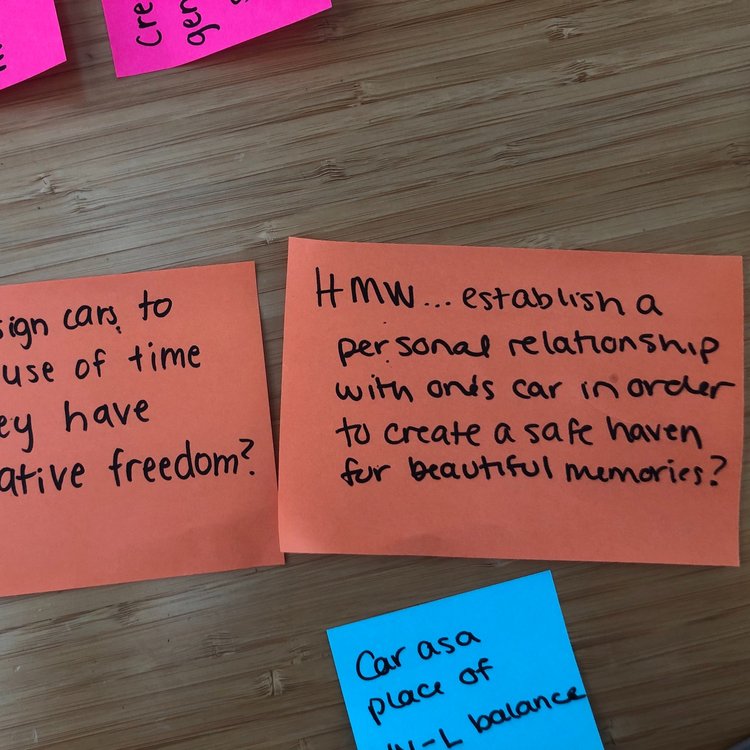
SOLUTION IDEATION
Having defined the end user (Persona – Stella) and the specific problem to solve (How Might We), we started ideating for various solutions.
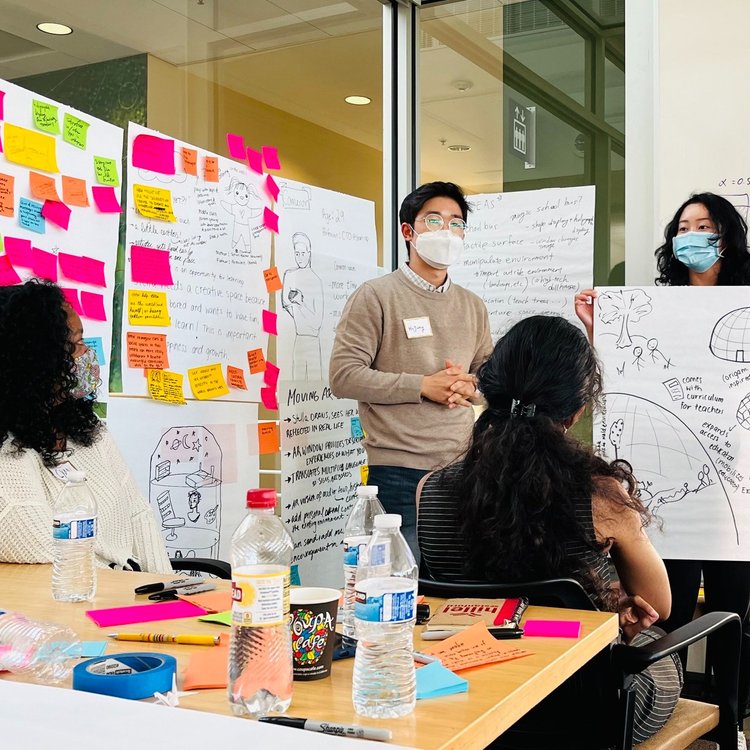
During our discussion, I brought up “The Magic School Bus,” a show with which many of us were familiar as children. Why is the show so memorable in the first place? (Well, besides the delightful Ms. Frizzle and her darling lizard, of course.) It’s certainly educational, but more importantly, there are elements of excitement and adventure in each unconventional field trip.
What could be more thrilling than visiting the inside of the human digestive system or catapulting into outer space? What if we could create a real-life version of the Magic School Bus?
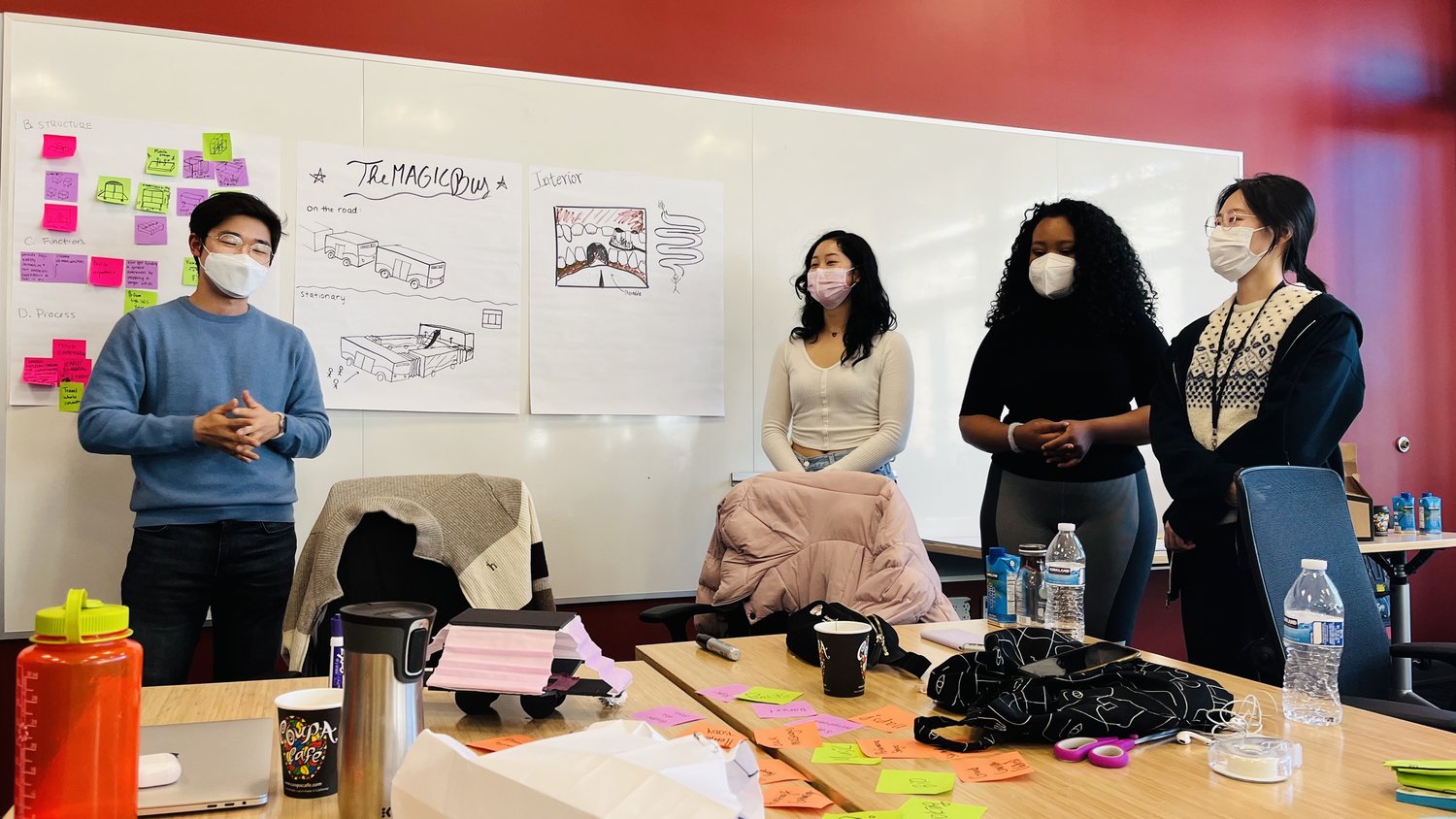
This concept of a Magic School Bus got us thinking about more ideas such as:
- Bringing the playful atmosphere of a place like Disney World to the family car
- The car as a bedroom, playroom and classroom
- Transforming the car into a new and exciting space (like a rocket ship)
Ooh, what about a Magic Bus School–a bus that can travel to pick up students and park in a designated location, where it then becomes a classroom? And just like that, The Magic School Bus became The Magic Bus School (if you’re confused, it’s a play on words).
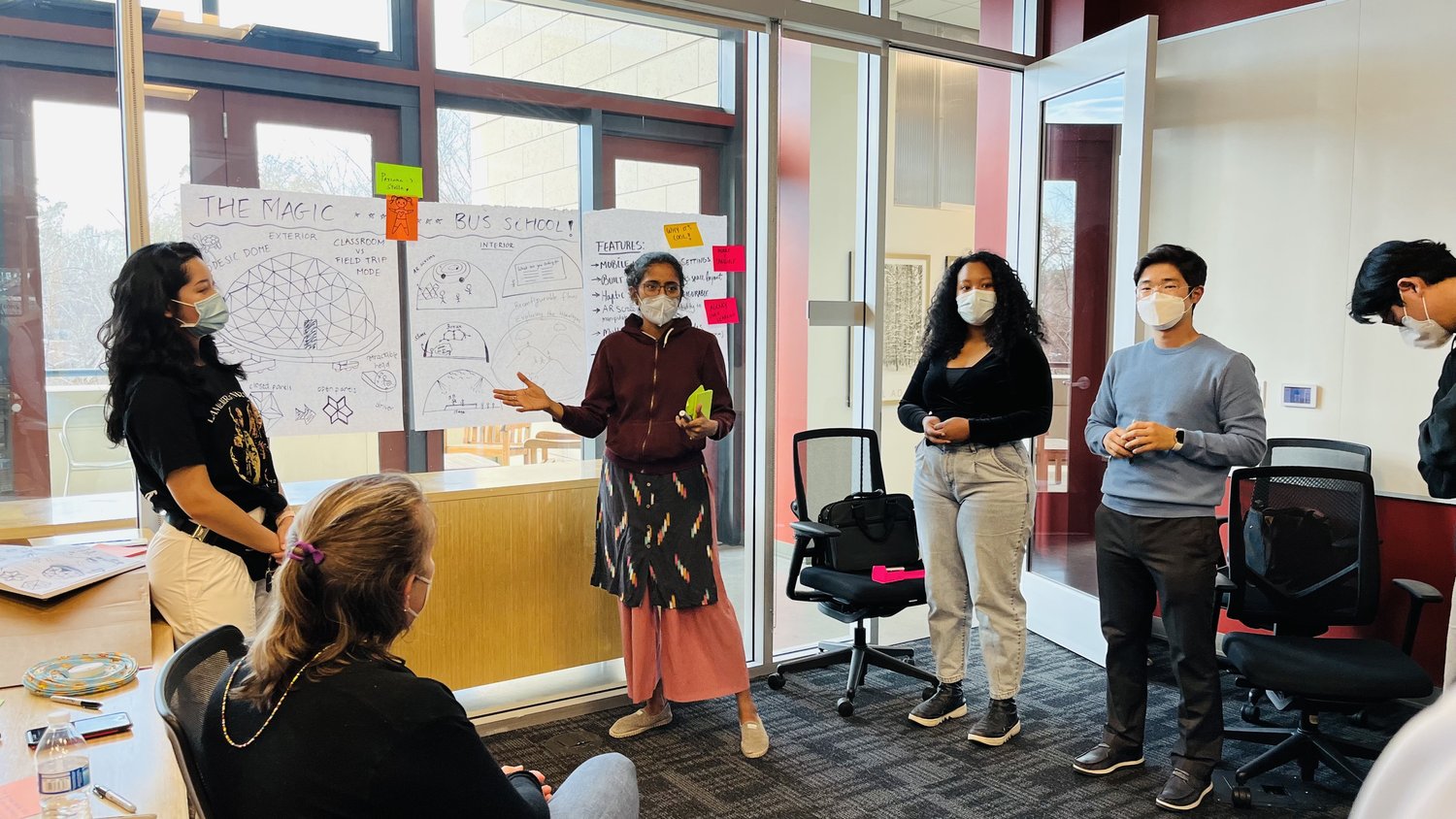
Before consolidating all our ideas into a final solution, we examined common underlying assumptions for the ideas and identified the core features of our solution. Some of the core features that we identified were:
- Being able to transform between mobile and stationary settings
- A field trip that comes to you (instead of you physically traveling somewhere)
- Various classroom modes
PROTOTYPING
Now for the fun part: designing the visuals and functionality of our Magic Bus School!
I drew inspiration from geodesic architecture, kinetic architecture, mobile homes, and biomimicry to develop this design.
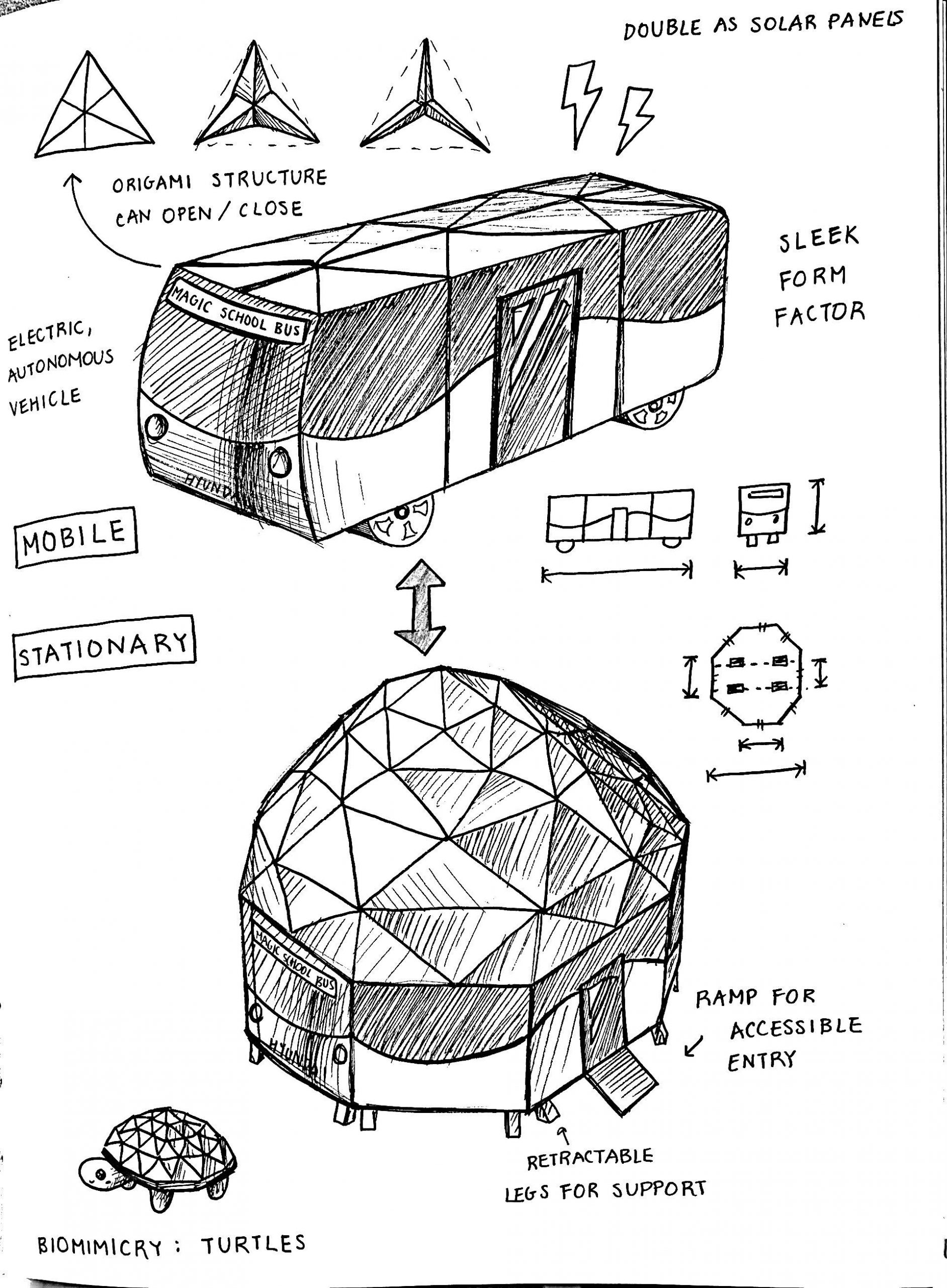
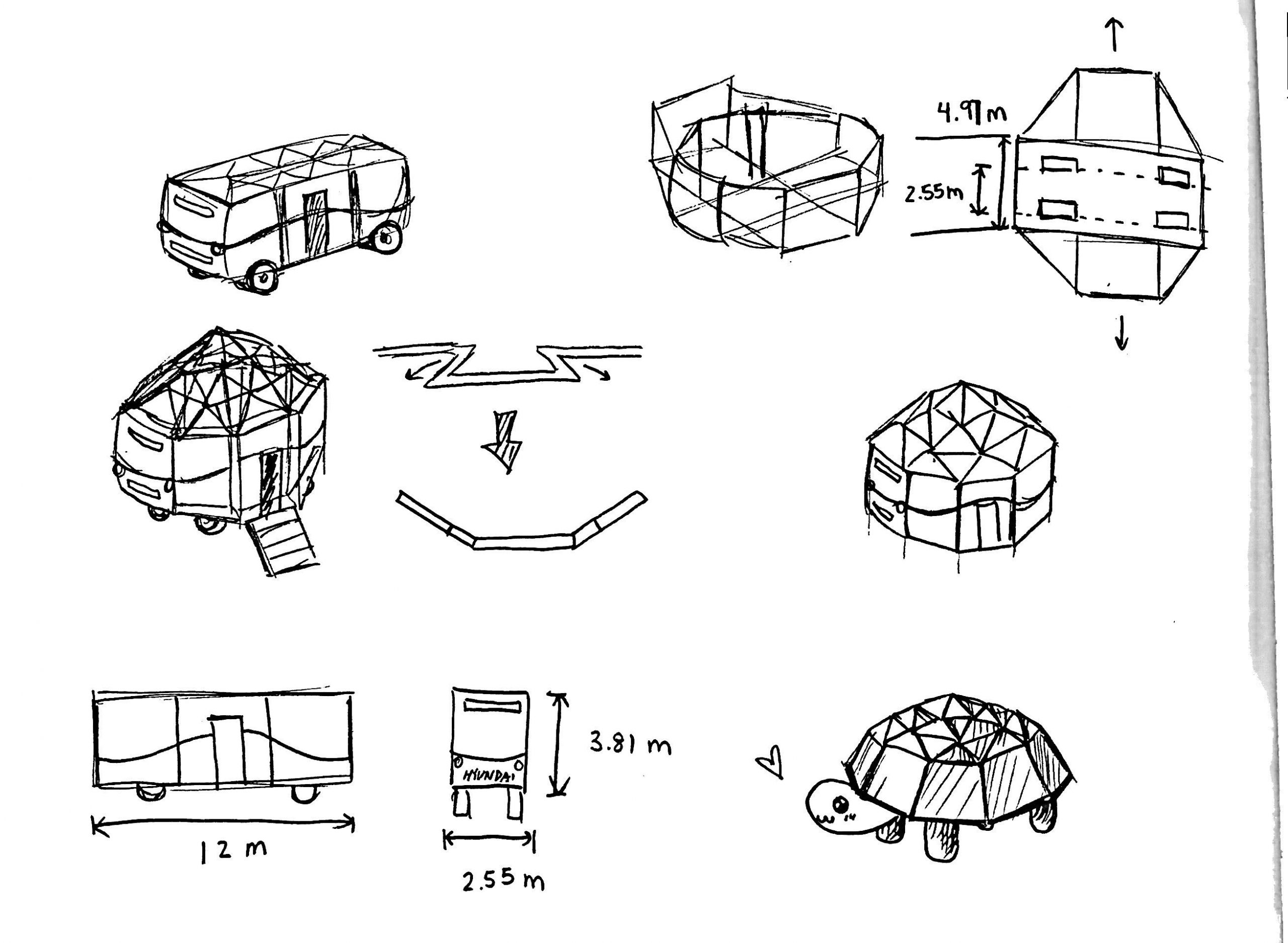

We knew that the logistics of transforming a rectangular bus into a dome would be wishy-washy, so we tested it out with some quick origami and pipe cleaner prototypes as well.
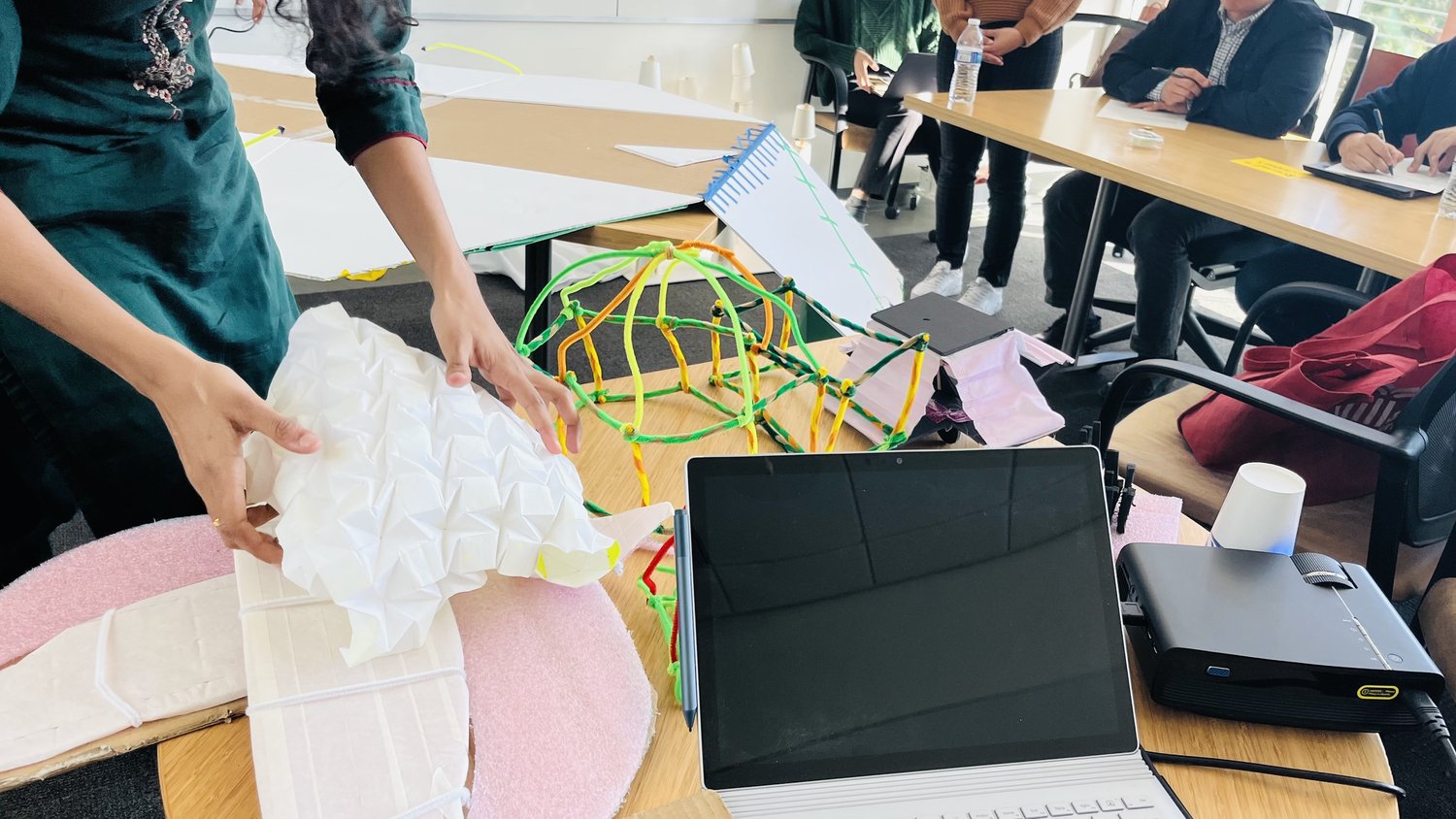
FINAL SOLUTION
For our final solution, we landed at the intersection of mobility, technology, architecture and play. For Stella, who has limited learning resources, we are bringing immersive, fun and magical experiences to her using our Magic Bus School. The Magic Bus School will pick up students in need, stop at an open area such as a field or parking lot, and transform into a dome-shaped classroom. Some highlights of the Magic Bus are:
- Expandable roof to create a dome (inspired by origami!)
- Tactile and interactive learning curriculum enabled by moving walls/panels and 3D holograms
- Robot assistants providing accessible service
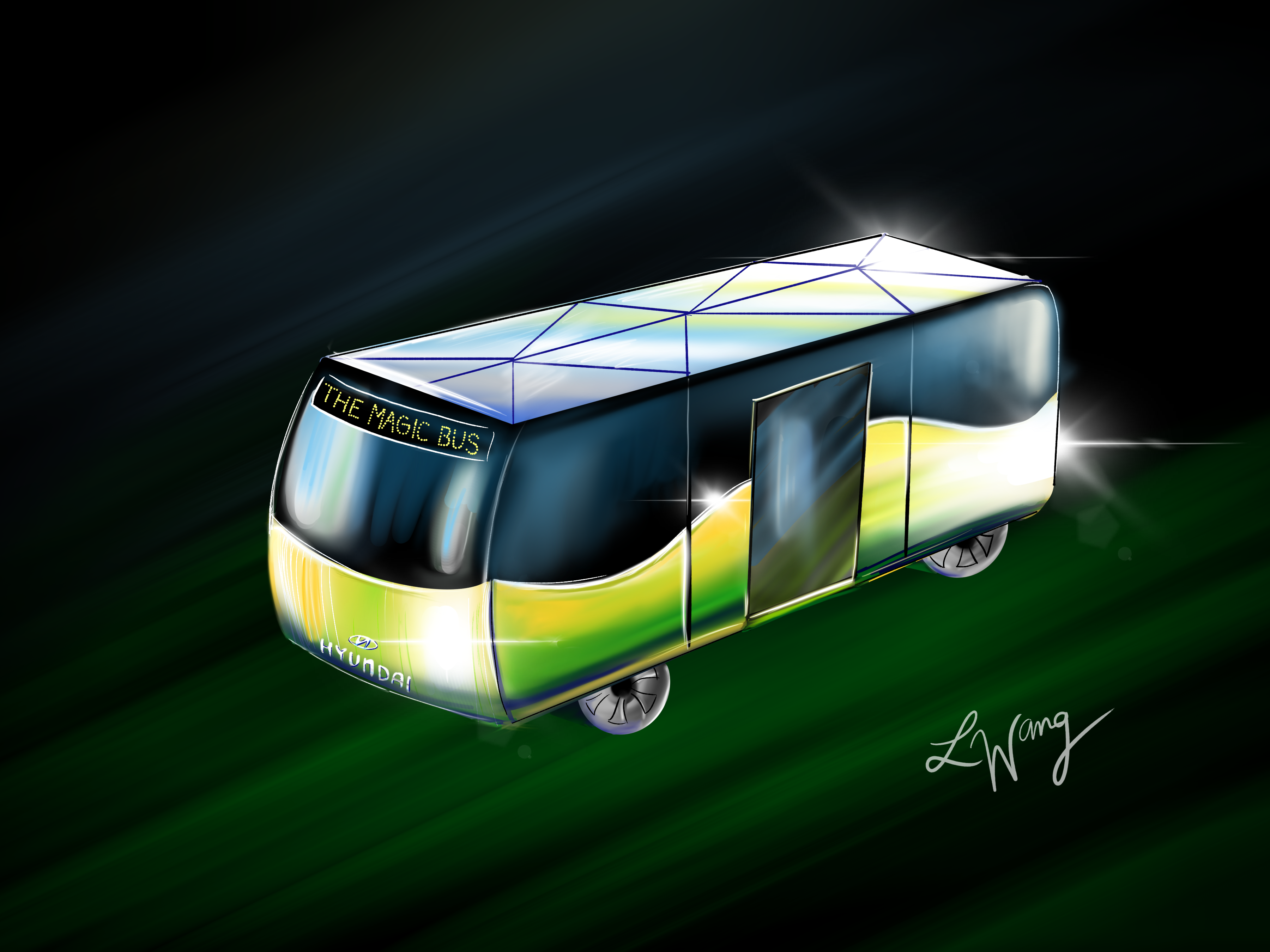
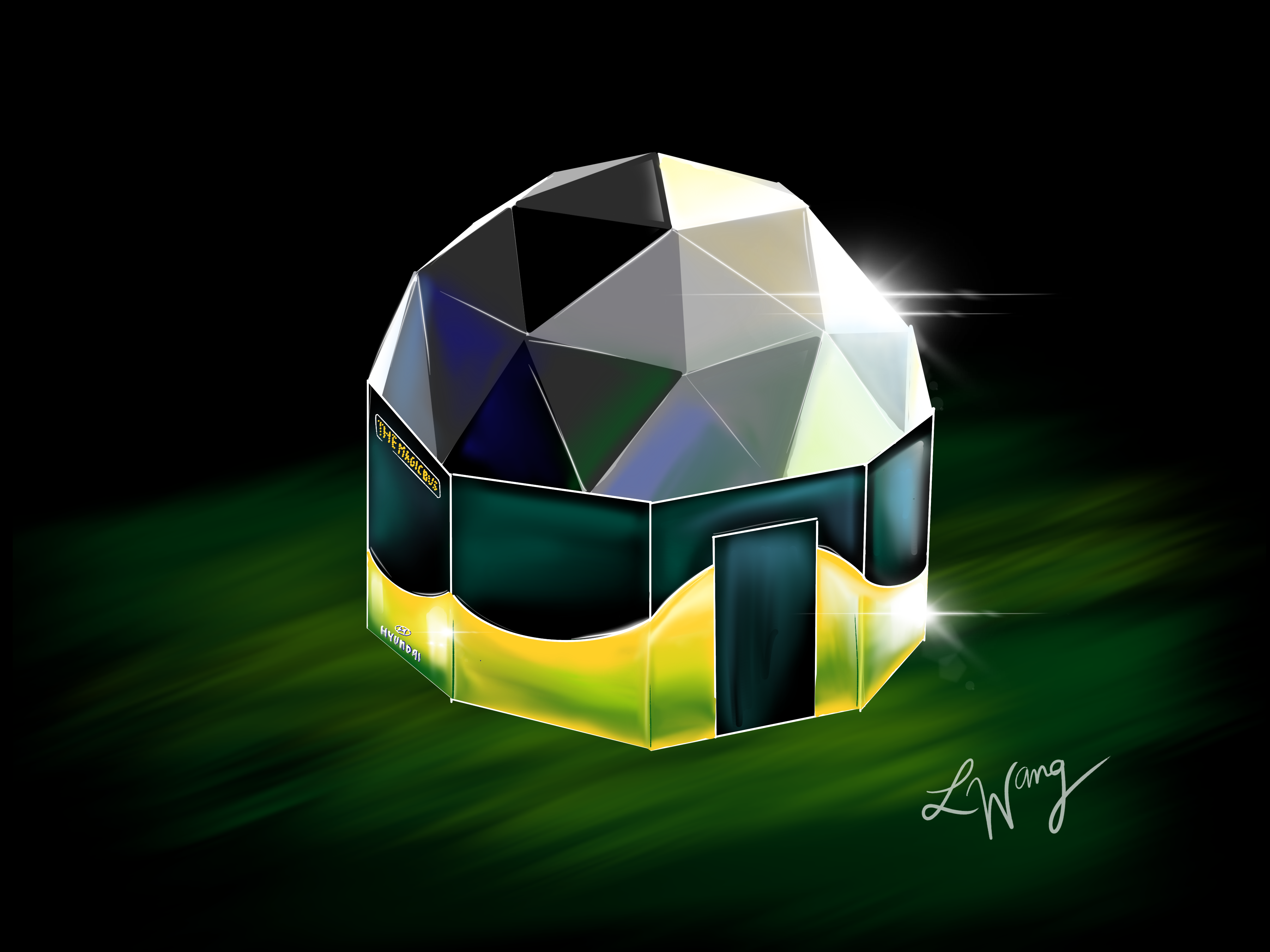
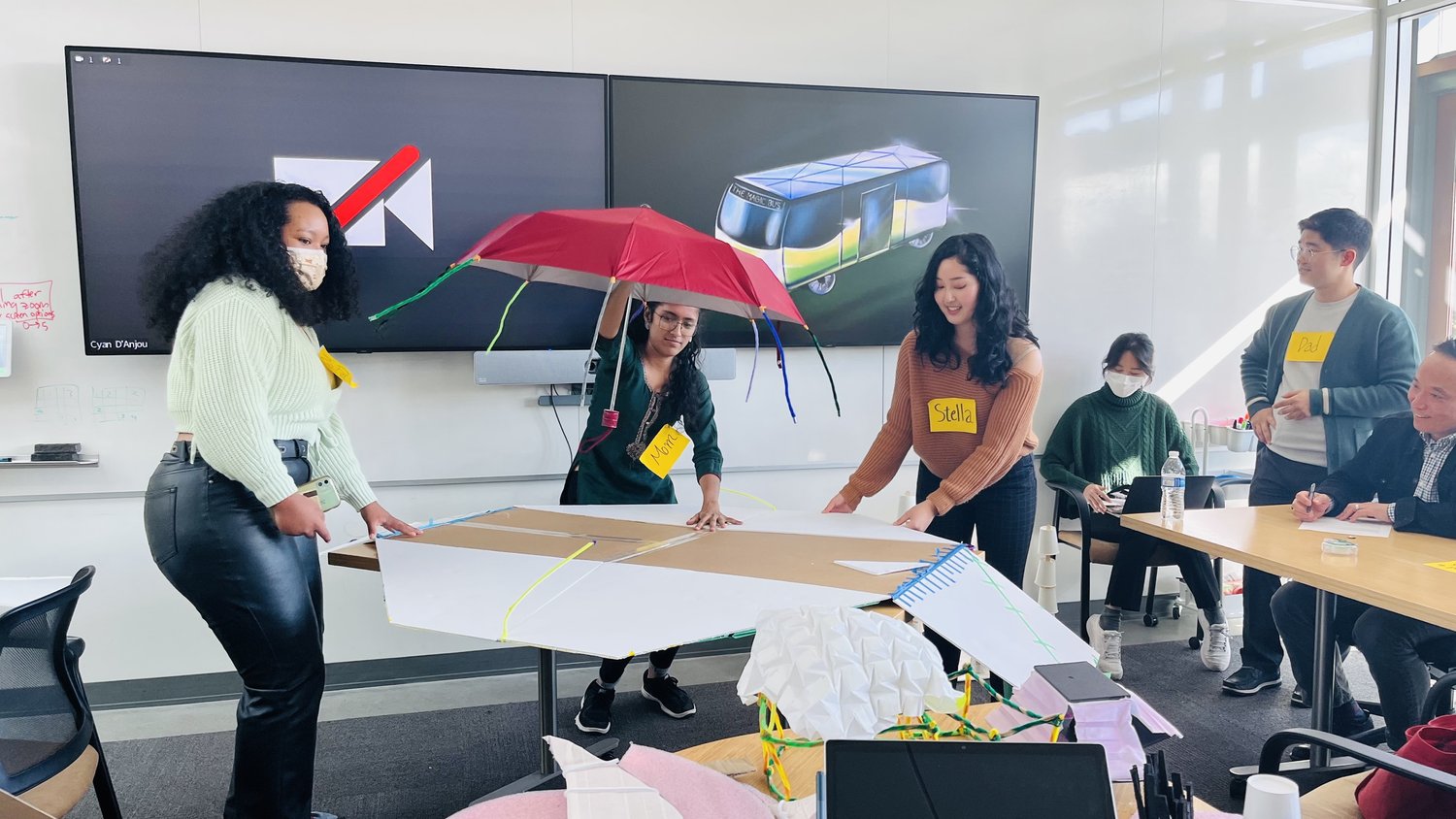
^^^ Our team decided to take on an interactive role-play approach to our final presentation!
LEARNINGS
Design vs. Engineering Problems
During our solution ideation phase, our team struggled to resolve the logistics of transforming a rectangular bus into an expandable dome. And we never did figure it out completely; despite the research and sketches and rapid prototypes, it was difficult to convince even ourselves that this could be possible. Later on, we realized that we were spending our energy tackling an engineering problem rather than a design problem.
After all, nobody from Hyundai was expecting us mere college students to build a functioning prototype. Instead of fixating on the mechanics of an expandable bus, our team could have thought more deeply about the design of the overall system. What kinds of students would the bus pick up? Would the bus target specific communities, such as communities of color or low-income neighborhoods? How would teachers be able to control the learning curriculum without in-depth technological knowledge? Who would fund the buses–private companies or entire school districts? These are the kinds of human-centered design questions that I wish my team had focused on.
Have fun!!!
Sure, I’ll admit that a Magic Bus School isn’t the most realistic or feasible idea in the world (did I mention that it would be an autonomous electric vehicle too?) If there’s anything that I learned from this workshop, it’s to think BIG, to see design thinking as not only a methodology, but a mindset. During this workshop, my teammates and I stretched our brains and challenged our existing assumptions about the world of transportation. How else will we shape the future of mobility? I say, have a little fun with it!
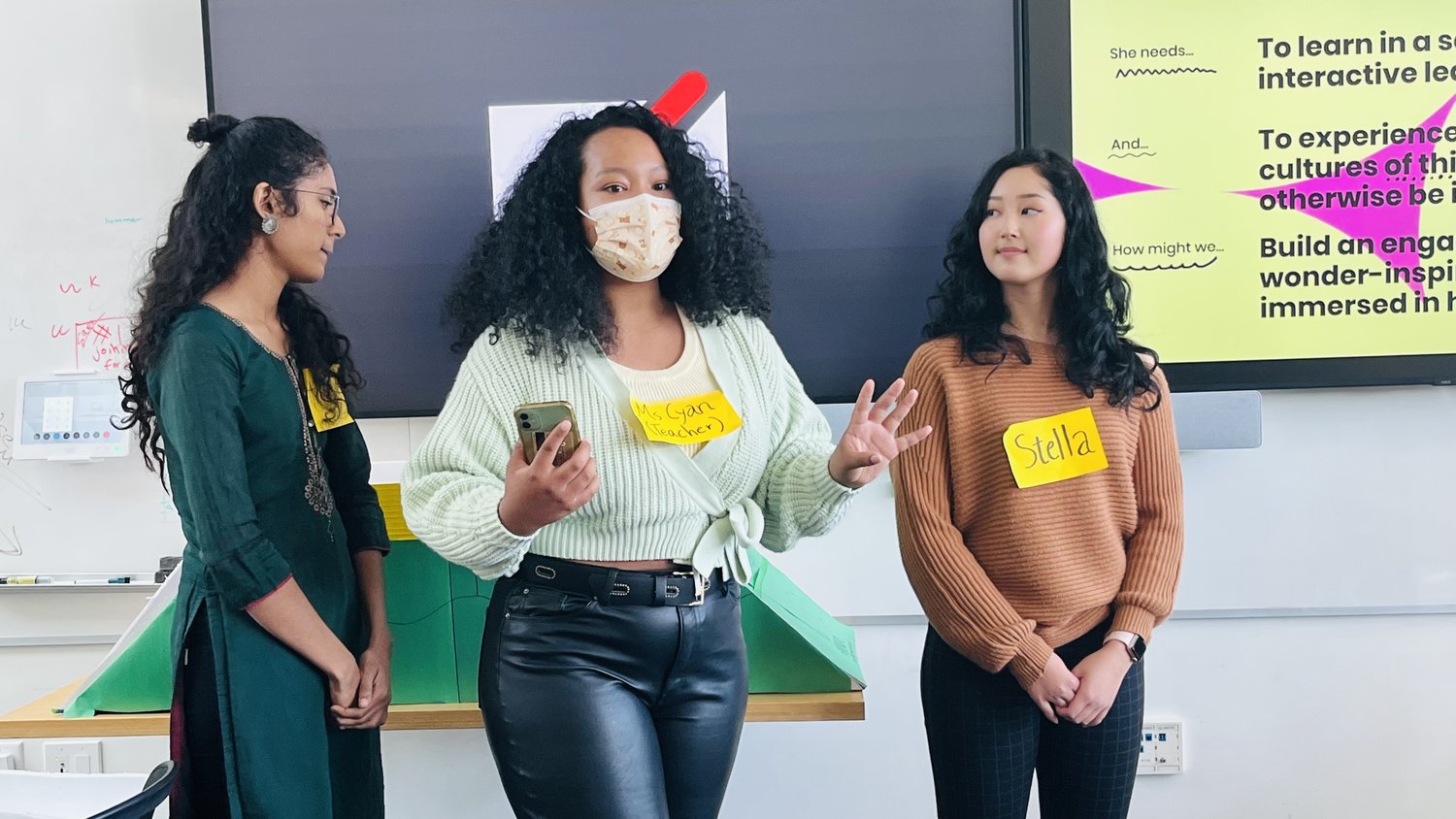
^^^ Swetha, Cyan, and yours truly (I’m pretending to be Stella, our user persona!)

